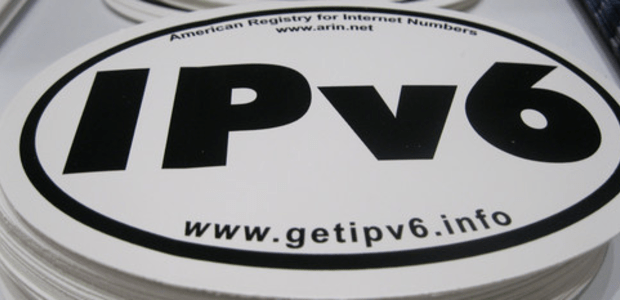advertisement
Why the journey to IPv6 is still the road less traveled
Though IPv6 is finished technology that works, rolling it out may be either a simple process or a complicated and…

Though IPv6 is finished technology that works, rolling it out may be either a simple process or a complicated and risky one, depending on what role you play on the Internet. And the rewards for doing so aren’t always obvious. For one thing, making your site or service available via IPv6 only helps the relatively small number of users who are already set up with the protocol, creating a nagging chicken-and-egg problem.
The new protocol, which is expected to provide more addresses than users will ever need, has madedeep inroads at some big Internet companies and service providers, especially mobile operators. Yet it still drives less than 10 percent of the world’s traffic. This is despite evidence that migrating to IPv6 can simplify networks and even speed up the Web experience.
The good news is that for ordinary enterprises, it can be just a matter of asking your ISP (Internet service provider) or hosting company for IPv6 service. Many of the major ISPs and CDNs (content delivery networks) are equipped to provide both IPv4 and IPv6 connections to a customer’s website, allowing partners and potential customers to reach it over the new technology if they have it.
For example, AT&T offers large enterprises native dual-stack connections to its network, allowing users to reach those companies over either IPv4 or IPv6, said Brooks Fitzsimmons, assistant vice president of technology and operations. That’s for customers with high-speed connections such as Gigabit Ethernet. For those with slower links, including consumers, AT&T can encapsulate IPv6 traffic for transport over existing IPv4 connections. Many other big service providers also offer such services.
Yet only about 14 percent of the top 1,000 websites have turned on IPv6.
“Many of them haven’t enabled it yet because of this perceived notion that it’s difficult. It’s not. It just takes a little bit of time,” said Paul Saab, a software engineer at Facebook, which is fully available over IPv6. “It can be done with a very small team,” Saab said.
That’s not true for everyone. Saab acknowledged that ISPs have a harder time of it, and some big enterprises that run their own Internet presence may also face challenges. For them, implementing IPv6 can be a complicated effort involving changes to automated processes and other back-end components, judging from war stories told at last week’s meeting of ARIN (the American Registry for Internet Numbers). Meanwhile, such projects can slip down the priority list in the face of day-to-day operations and dealing with growth.
“It’s a monstrous undertaking by any operator,” said analyst Michael Howard of Infonetics Research, a division of IHS. “The protocols might be robust, but this operation is delicate, because it has to be coordinated with all the routers.”
An error along the way can do more than slow down service — it can cut off users’ access to a website completely. There are software tools to automate the process, but they couldn’t handle every single router, Howard said, as routing code is full of quirky exceptions.
That painstaking effort is why some service providers are waiting to roll out the protocol, he said. In cases where it requires new hardware, they may also be waiting for their current gear to depreciate rather than rip it out early and take a loss. This can take years.
There’s a lot of work involved in any project that spans an entire network, AT&T’s Fitzsimmons said. In AT&T’s case, encapsulating IPv6 in IPv4 allowed the carrier to upgrade most home users’ equipment through software updates, but other changes require new hardware.
There are ways around deploying IPv6, even for service providers that don’t have enough IPv4 addresses for all their subscribers, but those techniques have limitations. The biggest is carrier-grade NAT (network address translation), a large-scale form of the way home and office networks let users share external addresses.
Instead of connecting directly to a site, subscribers go through a proxy that doles out IPv4 addresses from a limited stockpile. That makes a network more complex and can slow things down. It can also keep an Internet-based service from getting all the information it could, according to John Curran, ARIN’s president and CEO. For example, if the proxy that’s providing a user’s address is located in a different city from that user, then location data that could aid in targeting ads would be unusable, he said.
One barrier to getting an IPv6 deployment going is that it doesn’t generate any new revenue — at least for now. But for service providers, at least, the growth of mobile data and the Internet of Things is liable to change that.
Eventually, it’s expected that enterprises and governments deploying millions of sensors, cameras and connected machines will demand so many unique Internet addresses that service providers will only be able to satisfy that demand with IPv6. Holding off will cost them additional business. Howard at Infonetics thinks that day may be just three years away.
AT&T has only recently started to turn on IPv6 on its wireless network, but it believes this is where the technology ultimately will matter most. The carrier reported 19.8 million connected devices in use at the end of last year and expects that to grow quickly with the Internet of Things.
“You can’t do that in perpetuity, successfully, without IPv6,” Fitzsimmons said.